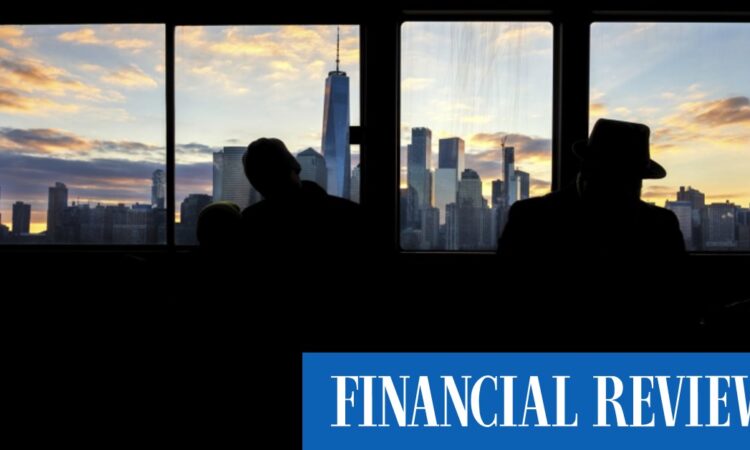
About $US1.2 trillion of US commercial real estate debt was “potentially troubled” because of the slump in prices, advisory firm Newmark Group said in August. Vacancy rates for office buildings in major US cities hit records and landlords walked away from some properties now worth less than their debt, handing them to their lenders.
US regional lenders were particularly exposed, and stood to be hurt harder than their larger peers because they lacked the large credit card portfolios or investment banking businesses that could insulate them.
In Europe, cracks began to show as the web of companies in Rene Benko’s Signa Group imploded, threatening credit losses for dozens of lenders. Some Asian banks were also feeling the pain, with Japan’s Aozora Bank warning investors it would report its first loss in 15 years because of bad loans tied to US property.
2. Why did prices fall so far?
The rise in interest rates on risk-free government bonds from early 2022 led investors to demand higher yields when buying property. As yields on commercial real estate are the rental income as a proportion of a building’s value, and rents tend to be fixed for several years, property prices need to fall for yields to rise.
It was a particular problem in Germany, where rental yields had reached record lows before the rate rising cycle began, and many property owners entered the crisis carrying higher debt burdens than their peers elsewhere.
3. Why are falling prices a problem?
Falling prices hamper a property firm’s ability to borrow. As the value of a landlord’s assets drops, its relative indebtedness – the all-important loan-to-value ratio – increases.
To avoid breaching the terms of its debt, the company may need to inject more cash into a property deal or take on more borrowing, albeit at higher rates and only if there’s enough rent to service it. If there isn’t, it may have to sell assets in an uncertain and falling market in which buyers will demand deep discounts. Those depressed prices make it harder for the industry to refinance the $US2.2 trillion ($3.39 trillion) of US and European commercial property loans due to mature by the end of 2025.
4. Which types of property were affected?
Office buildings were the biggest casualties as post-COVID changes in working patterns and poor energy efficiency combined with rising interest rates to crush values. Shopping malls were partly cushioned as their valuations had already taken a hit from the rise of e-commerce, so they were starting from a lower base when interest rates began to tick higher.
5. Are there regional differences?
Rising interest rates had a bigger impact on Europe’s property prices as yields there were lower than in the US when central banks began their raising cycle. However, valuations in the US fell further as it had a larger stock of new and empty buildings, and more Americans were still working from home. At the end of the third quarter of 2023, more than a fifth of office space lay empty in several major US cities.
6. What can you do with an empty office?
One option is to convert it for residential use, if local planning authorities allow it. Another is to adapt the building to reflect today’s flexible working practices. But older buildings are expensive to upgrade and energy efficiency improvements now demanded by governments and tenants add to the cost. The economics of these investments often don’t stack up. The alternative for landlords is foreclosure – handing unviable buildings back to their lenders.
7. How is it likely to shake out?
There is a growing divide between the best office buildings and the rest. Those with top green credentials and modern, exciting space can still command top rents. Others require billions in spending to bring them up to standard – money that banks saddled with growing backlogs of impaired loans are unwilling to lend.
You can knock buildings down and build better ones. But that route is becoming more challenging as policymakers focus on the embodied carbon in buildings from energy-intensive materials such as concrete, steel and glass. That means in many places they are determined to see properties refurbished, rather than redeveloped.
Bloomberg
Bloomberg Quicktake
